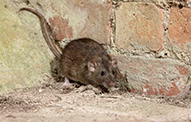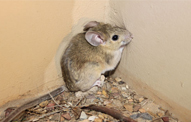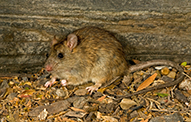Rodent Identification
People don’t often see rodents, but signs of their presence are easy to detect. It’s important to know which species is present in order to choose an effective control strategy. Rodent activity can be seen by gnaw marks on food and objects such as utility lines. Other indicators can include rub marks or grease stains along surfaces which are produced as the rodent travels along an edge and the oils in their fur are deposited. Generally, darker stains indicate greater activity. Rodent droppings are another sign of activity and can be scattered along frequently traveled rodent pathways.
Rat Behavior
Rodents are warm-blooded mammals that, like humans, can be found throughout the world. Rats live and thrive in a wide variety of climates and conditions and are often found in and around homes and other buildings, on farms, and in gardens and open fields. They have oversized front teeth for gnawing and check teeth, which are adapted for chewing. Rodents chew on a variety of items available to them and cause great damage in and around homes.
Rats will eat just about anything, but they prefer grains, meats and some fruits. Rats will eat about 10 percent of their body weight every day. Rats generally live about a year, but can live much longer in ideal conditions. They eat and contaminate food, damage structures and property, and transmit parasites and diseases to other animals and humans.
Rats are active mostly at night. They have poor eyesight, but they make up for this with their keen senses of hearing, smell, taste, and touch. Rats constantly explore and learn, memorizing the locations of pathways, obstacles, food and water, shelter, and features of their environment. They quickly detect and tend to avoid new objects and novel foods. Thus, they often avoid traps and baits for several days or more following their initial placement.



